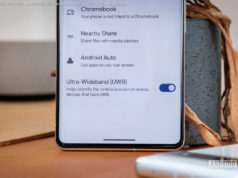The new Sony IMX 586 will produce images with a resolution of 8,000 x 6,000 pixels.
The new Sony IMX 586 will produce images with a resolution of 8,000 x 6,000 pixels.
Even though Sony may be failing in the smartphone segment, it remains the world leader in smartphone camera sensors, and can even hold its own against the very best in the pro camera market. Some of the best flagship devices like the Samsung Galaxy S9 duo, Xiaomi Redmi Note 5 Pro and the OnePlus 6 feature Sony’s IMX series image sensors.
Now, breaking all records, Sony has launched a new sensor, the IMX 586, which is claimed to be the world’s highest resolution image sensor for mobile phones. The image sensor will take the image quality to the next level, by offering an 8,000 x 6,000 resolution. According to Sony, this is the highest pixel count offered by anyone in the smartphone industry.
Simply bumping up the camera resolution is something that’s possible, but it’s not necessarily the ideal solution. If you think about it, even professional-grade cameras don’t offer 48 MP and offer far superior image quality than any smartphone. Pixel size is another factor that needs to be considered. The smaller the pixel (the smallest unit on the camera sensor that captures the light), the worse the camera’s performance in low-light.
What’s surprising here is that the IMX 586 offers 0.8-micron pixels, which is actually the smallest in the market. So shouldn’t that just be counterproductive? Well, yes it should be, but Sony claims that it plans to work around that by using something called the quad Bayer colour filter array, which will allow each pixel to pair with three other pixels, forming a 1.6-micron square pixel. This apparently enhances low-light sensitivity and overall performance. Several smartphone makers have used this technology in the past, the most notable being Nokia with the Lumia 1020 (41 MP) and HTC with its One M8 (5 MP). Clearly, the overall resolution of the output image will fall by a factor of 4, bringing the equivalent output to 12 MP instead of 48 MP.
“The new sensor uses the Quad Bayer colour filter array, where adjacent 2×2 pixels come in the same colour, making high-sensitivity shooting possible. During low light shooting, the signals from the four adjacent pixels are added, raising the sensitivity to a level equivalent to that of 1.6 μm pixels (12 megapixels), resulting in bright, low noise images,” Sony says in its blog .
We should start seeing the new Sony sensor on flagship smartphones coming in 2019.






